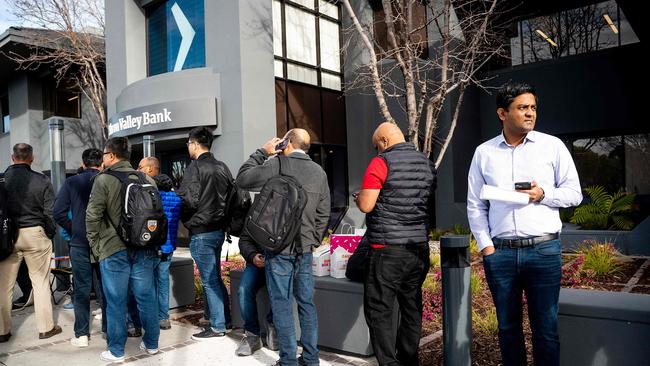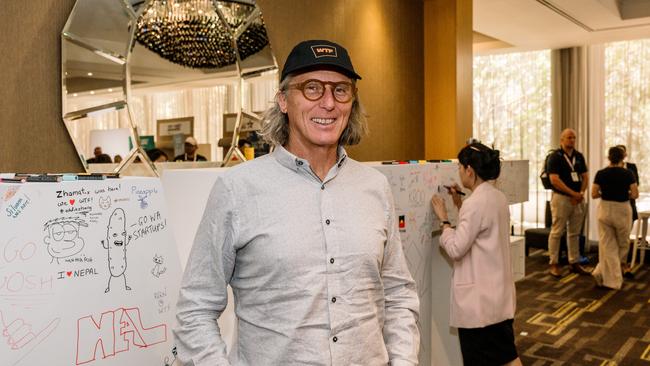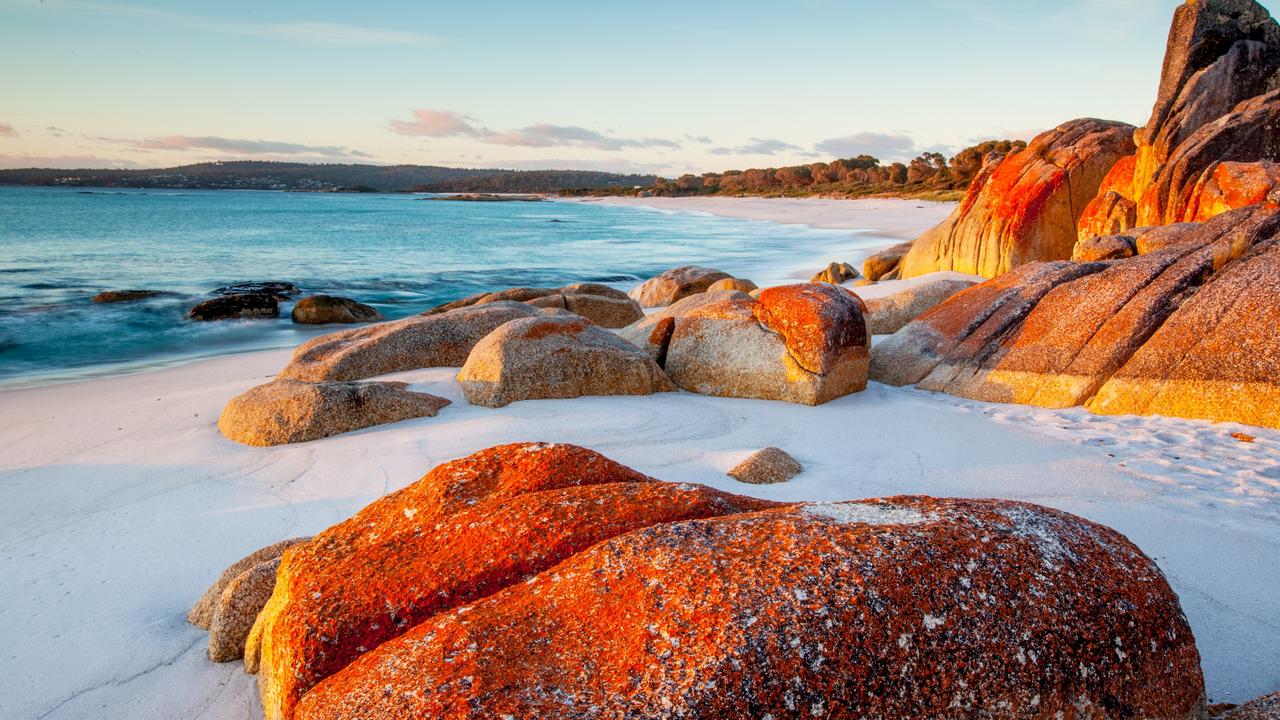Before its collapse, Silicon Valley Bank had big plans for Australia
Before it collapsed, Australia had caught the eye of SVB thanks to the success of Atlassian, Canva and SafetyCulture, and the bank had been planning to open its next office here.

Business
Don't miss out on the headlines from Business. Followed categories will be added to My News.
Even the night before the collapse, Aaron Gershenberg, a 24-year veteran of Silicon Valley Bank, had little inkling of the catastrophe that was unfolding.
He wasn’t the only one. To this day Gershenberg, an adviser to the bank’s investment arm SVB Capital, and many others with connections to the bank – known as the ‘‘fund of funds’’ – look back in horror.
The bank had hoped to open up operations in Australia by now, inspired by the recent success of tech start-ups Atlassian, Canva and SafetyCulture.
But the speed of SVB’s downfall – in just 48 hours – sparked fears of another Global Financial Crisis. The bombshell moment arrived amid rising interest rates and the end of the cheap-money era for technology, where low rates and a mid-pandemic boom saw venture capital funds investing healthy sums in start-ups.

SVB was a big player in financing those venture capitalists. “Even the night before it happened, I didn’t believe it was possible … We had grown to a size where we were supposedly too large to fail,” Gershenberg recalls. “I don’t know anyone who wasn’t absolutely shocked from what happened.” Gershenberg, one of SVB Capital’s founders and a former managing partner who joined in 1999, had so much faith in the business he’d actually held off taking home his bonus the previous year.
“I had deferred my entire 2022 bonus but never in a million years believed that the bank would get taken over by the FDIC,” Gershenberg, a headline speaker at WestTech Fest, tells The Australian. “The idea that SVB would be allowed to fail was just absolutely inconceivable.”
As for what caused the collapse, it was a cocktail of factors, but mostly the tough economic environment.
“The issue was US bonds,” Mr Gershenberg said. “These had a 10-year maturity at a low interest rate which, when they were purchased, made all the sense in the world.”
But as rising interest rates drove down the value of SVB’s assets, it was forced to sell those bonds at a loss.
A number of tech start-ups and customers who were feeling the pinch of the economy had also been chipping away at the bank and gradually withdrawing their funds. The loss on bonds spooked investors, who quickly pulled out funds.
To offset the huge sums of cash leaving the bank, SVB was forced to sell $US21bn ($31.9bn) worth of bonds at a loss of $US1.8bn. And when the bank tried to raise $2.25bn to cover the losses, it failed.

Spooked investors moved again, that time attempting to pull $42bn from the bank – a classic bank run that ensured its collapse.
The failure was the largest financial crisis since the GFC in 2008. And it left the bank in such a state that Gershenberg believes nothing like it will ever exist again. “It was a loss, in my mind, beyond words,” he says. “Its wings have been clipped … It’s unlikely it’ll ever be what it was.”
Mr Gershenberg believes SVB was in a situation not dissimilar to others.
“The government had all of the resources and wherewithal to allow the bank to borrow against those bonds or to even provide the liquidity that was necessary,” he says. “What they didn’t realise when they were confronted with SVB was there were thousands of other banks in the exact same situation.”
From conversations he had amid the collapse, Gershenberg believes the government didn’t realise there was scope for contagion.
But the pill that was hardest to swallow came from social media.
“I think the thing that was hardest for me was that there were people who, it appeared, were using Twitter to create panic and eventually a run on the bank,” he says.
That panic on Twitter, coupled with the speed at which online banking withdrawals could be made, was a recipe for disaster.
“What nobody realised was because people can just literally off their iPhones wire money out of the bank, how quickly the capital the deposits could leave the bank,” he says.
“I think there were some bad actors out there that contributed to that and I think that the FDIC and the Fed panicked and I think they’ve acknowledged that they totally mishandled the process.”
On March 27, First Citizens bank acquired $US72bn worth of SVB’s loans and all of its deposits (totalling $US56bn) for $US16.5bn.
About $US90bn worth of assets remained under the control of the Federal Deposit Insurance Corporation.
While he was happy someone had stepped in to buy parts of the bank, Gershenberg says he was a little surprised who had become the new owner. “I think the jury’s still out on that one. My initial reaction was, ‘how could we not have an iconic brand with an iconic balance sheet to acquire the bank?’,” he says.
In fairness, he says, much of the feedback from staff who still work for SVB has been positive.
The collapse sent shockwaves through Australia, and bodies including the Tech Council of Australia moved quickly to assess the damage.
While Gershenberg says the bank had helped fund Australian start-ups expanding into the US, exposure back home was limited.
But the problem could have been a lot larger. Prior to its collapse, SVB had been eyeing a new home in Australia. The bank had just shy of 30 locations in the US, Canada, Europe, Hong Kong and China. And next on the list was Australia.
“I would have imagined that would have likely have been the case. It was definitely on the road map before something in Mexico, Tokyo or Singapore,” Gershenberg says.
What attracted SVB to Australia was the unicorns of the last decade.
“You look at companies like Atlassian, Canva and SafetyCulture – these just incredible success stories coming out of Australia – that was what was catching the attention of Silicon Valley Bank and having it consider this market,” he says.
Joseph was a guest of WestTech Fest in Perth.
More Coverage
Originally published as Before its collapse, Silicon Valley Bank had big plans for Australia





